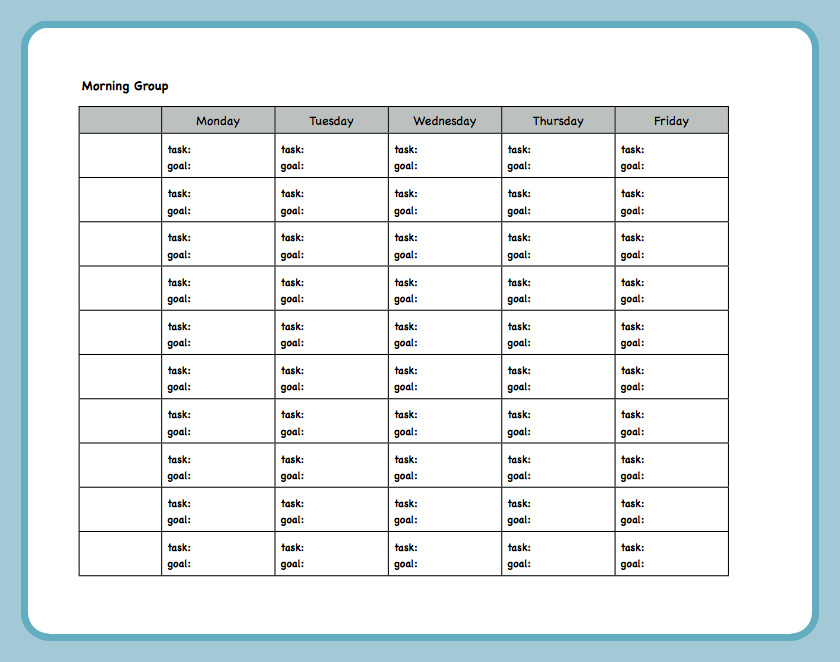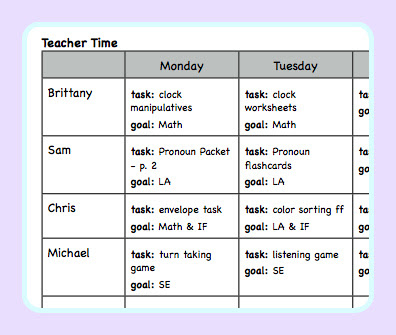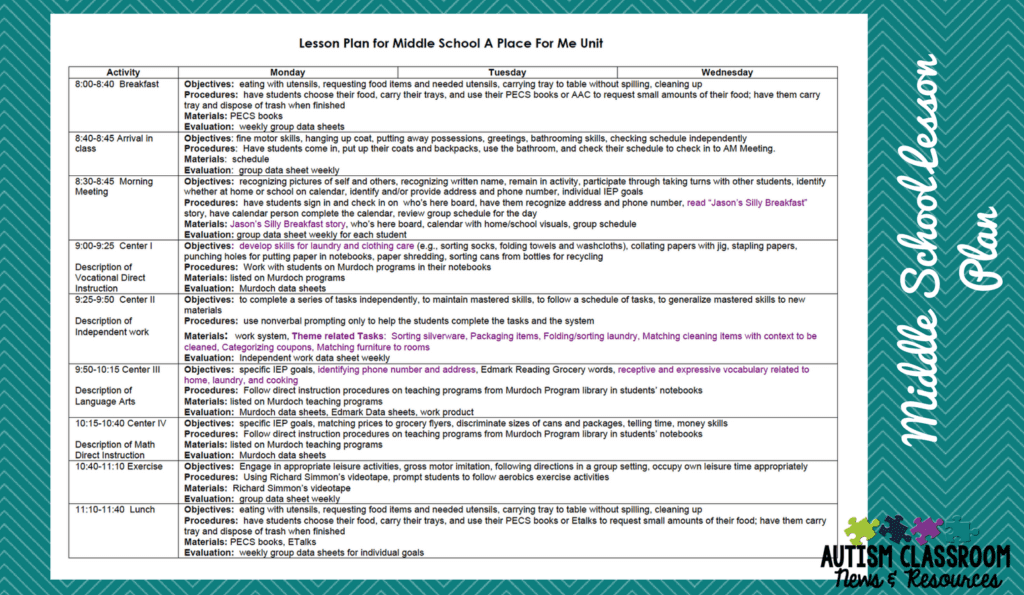Every student has their own unique needs in the classroom, but when it comes to those with Autism Spectrum Disorder, there are some important aspects to understand. From how to engage an autistic child in learning, to autism resources for teachers, refer to this guide for practical tips. We also included downloadable lesson plan templates for learners with ASD.
What Is Autism Spectrum Disorder?
Characteristics of Autism Spectrum Disorder
How Can I Accommodate Students on the Autism Spectrum?
Lessons & Activities for Students with Autism
Teaching Students with Autism: Lesson Plan Examples
How to Support Autistic Students In & Outside the Classroom
What Is Autism Spectrum Disorder?
Autism spectrum disorder (ASD) is a neurodevelopmental condition that causes significant challenges in social skills, communication and behavior in young children and persists into adulthood. According to the latest data available from the Centers for Disease Control and Prevention, ASD is seen in around 1 in 36 children and is four times more likely among boys than girls. Occurrences are on the rise as clinicians improve at recognizing symptoms. Doctors are not certain what causes autism, but have documented that it occurs in all racial, ethnic and socioeconomic groups.
ASD includes several previously separate diagnoses — pervasive developmental disorder not otherwise specified (PDD-NOS) and asperger syndrome.
When it comes to addressing any type of ASD in the classroom, experts recommend that teachers learn as much as possible about a student’s individual needs in advance.
Characteristics of Autism Spectrum Disorder
Students with autism exhibit a wide range of abilities and characteristics. It’s best to know as much about a student’s history as possible, without assuming which symptoms they have or trying to self-diagnose them.
Symptoms can range from mild to severe and often change over time. A few common signs of autism spectrum disorder include:
- Having trouble talking or making eye contact
- Preferring to play alone
- Showing unusual attachments to certain objects or activities
- Struggling in social interactions with other students
- Appearing overly sensitive to noises, movement or other stimuli
The learning abilities of students with autism can range drastically. While many children with autism have typical intelligence levels, others have mild or significant intellectual delays. Some children are non-verbal, which is commonly mistaken for an intellectual delay or deficit.
Characteristics of ASD fall into two categories:
- Social interaction and communication problems, often causing struggles with back-and-forth conversation. This also includes a disinterest in sharing personal emotions and difficulty understanding what others are feeling. Having a hard time understanding or responding to social cues like eye contact and facial expressions is common.
- Restricted and repetitive patterns, like hand-flapping and toe-walking, or speaking in odd patterns or pitches. These children will commonly exhibit intense interest in activities that are uncommon for someone similarly-aged. Sensory issues can include indifference to pain or temperature, excessive smelling or touching of objects and fascination with lights and movement. Loud noises are likely overwhelming.
How Can I Accommodate Students on the Autism Spectrum?
Inclusion is not about disability, nor is it only about schools. Inclusion is about social justice. Inclusion demands that we ask, ‘what kind of world do we want to create?’ –Mara Sapon-Shevin, Syracuse University
Whether in a general or special education classroom, be mindful of creating a classroom that is inclusive of all learners. The following are some aspects of a classroom environment to consider when accommodating students with ASD:
- Avoid sensory overload; loud music and bright lights
- Stick to a routine
- Use cool, calm colors to create a more relaxing atmosphere
When it comes to differentiating classroom instruction for students with ASD, teachers should maintain a clear, low voice — with direct language — and try to keep verbal instructions short, leaving minimal room for misinterpretation. When longer instructions are necessary, write them down on a piece of paper so students can refer back.
Signage with photos and demonstrations for visual learners have also proven to be effective. Open-ended questions can be challenging for students with ASD, who are more comfortable with fewer choices for easier decision-making. And above all — be patient. Give students with ASD time to absorb what you have said and process it at their own pace.
To avoid making students with ASD feel isolated from their peers, involve other students in your accommodation efforts. Assign note-takers, bathroom buddies and homework helpers. If possible, educate students about ASD with a take-home handout they can go over with their parents and caregivers.
There are many behavioral accommodations to consider as well. Keep in mind that scolding or harshly reprimanding a student with ASD is likely to cause them anxiety. Instead, prioritize positive reinforcement for acceptable behavior.
Give students with ASD repetitive tasks during group activities. They are more likely to succeed with predictable duties to accomplish. You can also create a few structured one-on-one interactions between students to promote their social skills without overwhelming them.
Provide alternative communication options for students with speech delays and non-verbal students, like sign language, assisted communication devices and picture cards.
If you find yourself unsure of how to approach a situation involving a student with ASD, just ask. They may be able to communicate what it is they need to feel safe, comfortable and included. Use the resources around you, including the school psychologist, who is professionally trained in supporting students and their social-emotional needs.
Lessons & Activities for Students with Autism
Students with ASD often receive an Individualized Educational Plan, or IEP, which outlines a student’s specific needs while in school. Lessons designed primarily for neurotypical students can be more detailed or nuanced than a student with ASD can or wants to participate in. An IEP ensures that a student with unique needs can learn effectively alongside their peers.
The following are a few specific activities and suggestions for successfully engaging students on the autism spectrum.
Sensory activities with stress balls, finger paint, clay or fidget toys have proven popular among students with ASD. This type of play is known to stimulate the five senses, of particular importance to children who struggle to process sensory information. Re-training the brain to tolerate — and even enjoy — different textures, sounds and scents can help these students better navigate day-to-day life.
Exercise games are often enjoyable for ASD students who have a hard time staying seated in a traditional classroom for long periods of time. Providing a movement outlet can be the midday release a student needs in order to refocus.
Reading materials that highlight social-emotional skills are highly valuable. There are many picture books that speak to varying ages and abilities, including many that feature heroes with ASD.
Lessons on influential people who were on the ASD spectrum may also be well-received. Charles Darwin, Michelangelo, Mozart and Emily Dickinson are just a few influential people to include in potential lessons.
Find more specific activities here.
Teaching Students with Autism: Lesson Plan Examples
These lesson plan templates from The Autism Helper can help guide static and variable activities.
Static:

Variable:

Completed example:

Print your lesson plans and post a copy at each station so everyone on the team — including aides and therapists — know what each student is working on daily.

How to Support Autistic Students In & Outside the Classroom
Teachers should coordinate and share knowledge with parents to ensure that lessons learned in the classroom are fully supported at home. A meeting to set the precedent at the beginning of the school year can be helpful in getting everyone on the same page. Set up a system to exchange notes on how things are going in all aspects of the student’s life, bridging any gaps between home and school.
Students diagnosed with ASD are more likely than neurotypical children to be diagnosed with attention-deficit hyperactivity disorder (ADHD) and learning disabilities. Teachers should watch for symptoms of learning disorders and refer students to a specialist if needed.
Children with autism also have a tendency to develop emotional disorders due to the unique challenges they face. Feeling isolated and misunderstood can take a toll — those with ASD are more likely to self-harm compared to their peers.
Another unfortunate finding shows that children with autism have a higher likelihood of being bullied. Because of challenges with understanding their surroundings, children with ASD may not even know they are being bullied. It’s important to be clear about what behavior is acceptable and what is not.
The University of San Diego’s online Master of Education program is proud to offer a specialization in Inclusive Learning: Special Education & Universal Design. This specialization is appropriate for K–12 teachers in both special education and general education classrooms to learn about removing curriculum barriers, engaging all learners and serving all students equitably.
For more information about this timely and innovative degree program, connect with a USD enrollment advisor today.




